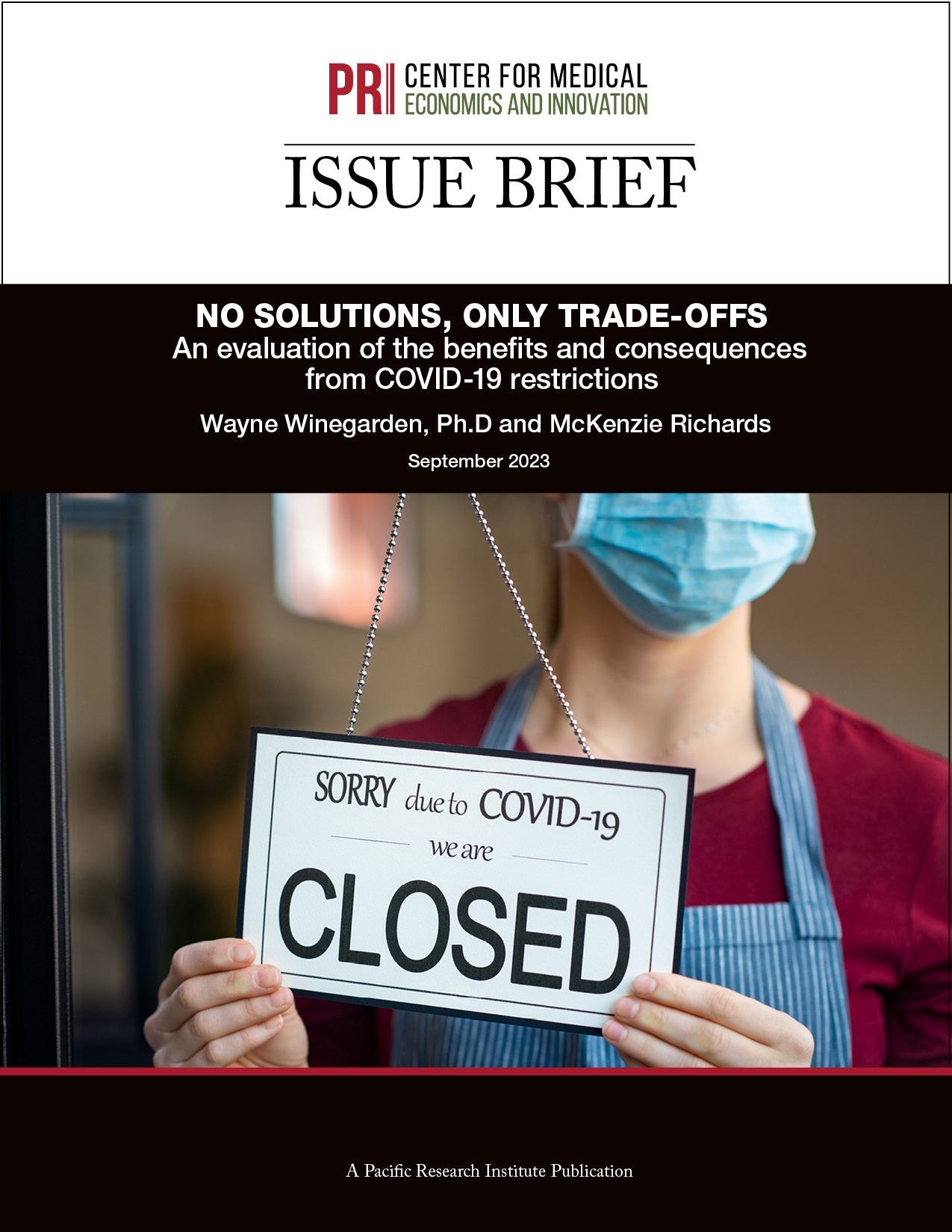States that had more invasive COVID-19 restrictions saw small reductions in COVID-19 infection and mortality rates, but saw large negative impacts on employment, economic growth, and children’s education outcomes, finds a new brief released today by the Center for Medical Economics and Innovation at the nonpartisan Pacific Research Institute.CMEI_Covid_FINAL
Click here to download the brief
“Looking at the data, states with stricter COVID-19 public health policies did see small health benefits from reduced infections and mortality rates – but at the expense of sizeable decreases in economic growth and education outcomes,” said Dr. Wayne Winegarden, director of PRI’s Center for Medical Economics and Innovation and the study’s co-author.
“Given these significant tradeoffs, it is essential for states to consider the large costs that interventions impose upfront while devising future pandemic responses. Future policies should be tailored to tightly target the most vulnerable populations while minimizing the costs students and working adults must bear,” he concluded.
“No Solutions, Only Tradeoffs,” authored by Winegarden and McKenzie Richards, examined whether the states rated as having more restrictive interventions realized health benefits from fewer COVID-19 infections and deaths.
The PRI brief analyzed state by state outcomes data that included COVID-19 infection rates and mortality rates, relative economic growth, employment growth, changes in reading scores, and changes in math scores. These outcomes were compared to the restrictiveness of each state’s COVID-19 policies.
Based on the review of the data, the PRI brief found that:
- More restrictive interventions did reduce COVID-19 infection and mortality rates. However, these small health benefits were offset by the increase in other health risks, such as the increased number of late cancer identifications due to delayed cancer screenings.
- Comparing the states based on mortality rates on June 3, 2020, to April 7, 2021, the study finds that only when this timing adjustment is included is there a higher rate of COVID-19 mortality rates in states with fewer restrictions versus more restrictions.
- There were significant unintended consequences from stricter COVID-19 restrictions. For example, states with higher levels of restrictions suffered larger economic consequences compared to those with fewer restrictions, particularly in reductions in their share of the national economy and the states’ food and accommodation sectors.
When planning future pandemic responses, the authors conclude, policymakers should learn from the lessons of the COVID-19 pandemic restrictions and enact more narrowly tailored policies to affect the most vulnerable while mitigating huge potential economic and education outcome losses.
The Pacific Research Institute (www.pacificresearch.org) champions freedom, opportunity, and personal responsibility through free-market policy ideas. Follow PRI on Facebook, Twitter, and LinkedIn.

